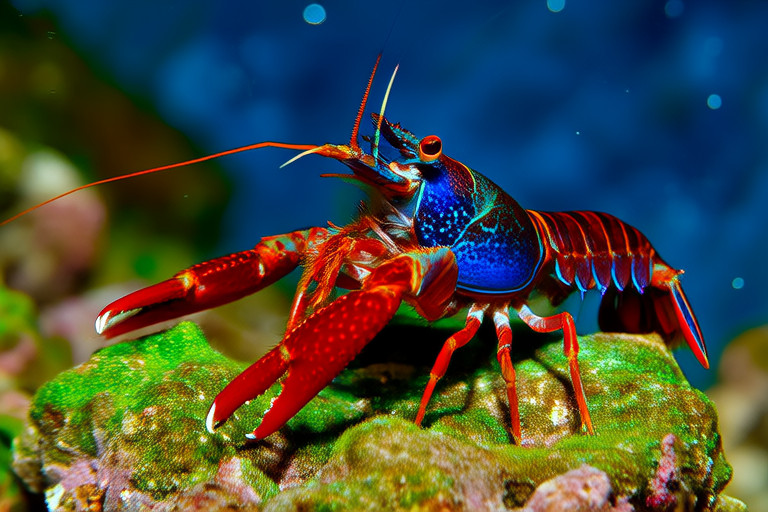
Top 10 Fascinating Facts About Coral Shrimp You Need to Know
Coral shrimp, also known as coral cleaner shrimp or skunk cleaner shrimp, are small crustaceans that play a vital role in their ecosystem. These fascinating creatures have intrigued scientists and nature enthusiasts alike due to their unique behaviors, symbiotic relationships, and adaptations for survival. In this article, we explore ten of the most fascinating facts about coral shrimp, offering insights into their habitat, diet, reproduction, and conservation.
1. Habitat: A Diverse Range of Marine Environments
Coral shrimp are predominantly found in tropical and subtropical waters around the world. They thrive in coral reefs, rocky crevices, and even within seagrass beds. Their preference for these environments is primarily due to the abundant food sources and protection from predators that these habitats offer. The diverse range of ecosystems they inhabit showcases their adaptability to different conditions.
2. Symbiotic Relationships: Cleaning Stations for Marine Life
One of the most remarkable features of coral shrimp is their symbiotic relationship with other marine organisms. They establish cleaning stations where fish and larger invertebrates come to be cleaned of parasites and dead skin. This mutualistic relationship benefits both parties: the shrimp receive a steady food supply, while the cleaner clients enjoy health benefits. This interaction exemplifies the intricate web of life in marine ecosystems.
3. Diet: Picky Eaters with a Purpose
The diet of coral shrimp is specialized and focused on consuming parasites, dead tissue, and mucus from their clients. They are selective feeders, ensuring they remove harmful substances without causing damage. This dietary specialization highlights their importance in maintaining the health of reef ecosystems by controlling parasite populations and promoting healthy growth among reef inhabitants.
4. Behavior: Active and Social Creatures
Coral shrimp are active throughout the day, often seen bustling around their cleaning stations. They are social animals, frequently living in pairs or small groups. Their behavior includes complex interactions with clients, such as signaling and positioning themselves to maximize efficiency during cleaning sessions. These behaviors underscore their intelligence and adaptability within their ecological niche.
5. Reproduction: Complex Mating Rituals and Parental Care
The reproductive process of coral shrimp involves intricate mating rituals. After mating, females carry fertilized eggs attached to their abdomen until they hatch. This form of parental care ensures higher survival rates for offspring, contributing to the sustainability of their population. The complexity of their reproductive strategies reflects their evolutionary adaptation to challenging marine environments.
6. Unique Adaptations: Camouflage and Defensive Mechanisms
Coral shrimp possess several unique adaptations that aid in their survival. Their coloration often mimics the surrounding environment, providing camouflage against predators. Additionally, some species have developed defensive mechanisms like the ability to release a chemical deterrent when threatened. These adaptations highlight the importance of evolutionary biology in shaping these creatures’ survival strategies.
7. Conservation Status: Threatened by Environmental Changes
Despite their resilience, coral shrimp face threats from environmental changes, including pollution, overfishing, and climate change. These factors can disrupt their habitats and food sources, posing significant challenges to their survival. Conservation efforts aimed at protecting coral reefs and marine biodiversity are crucial for ensuring the continued existence of coral shrimp.
8. Species Diversity: Over 30 Known Species
There are over 30 recognized species of coral shrimp, each exhibiting distinct characteristics adapted to specific environments. From the bright red peppermint shrimp to the more subdued coral banded shrimp, diversity within the genus underscores the richness of marine life. Understanding these variations helps researchers and conservationists tailor strategies to protect individual species.
9. Role in Ecosystem Health: Indicators of Reef Health
Coral shrimp serve as important indicators of reef health. Their presence and activity levels can provide valuable insights into the overall condition of coral reefs. Healthy populations suggest thriving ecosystems, whereas declines may signal underlying issues requiring attention. Monitoring these creatures offers a non-invasive method for assessing reef vitality.
10. Scientific Interest: Ongoing Research and Discoveries
Scientists continue to study coral shrimp to uncover new insights into marine ecology and evolution. Recent research has explored aspects such as genetic diversity, behavioral patterns, and responses to environmental stressors. These studies contribute to our understanding of marine ecosystems and inform conservation practices designed to preserve these vital organisms.
In conclusion, coral shrimp are fascinating creatures that play a crucial role in maintaining the balance of marine ecosystems. Their symbiotic relationships, specialized diets, and unique adaptations make them a subject of ongoing scientific interest. By learning about these remarkable animals, we gain a deeper appreciation for the complexity and beauty of underwater life, emphasizing the importance of conservation efforts to protect these delicate ecosystems.






